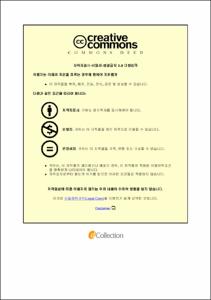Ulsan Univ. Repository
Thesis
General Graduate School
Mechanical & Automotive Engineering
1. Theses (Master)
IMPROVED TRIBOLOGICAL PERFORMANCE OF MOS2 USING MULTIWALLED CARBON NANOTUBES
- Abstract
- Molybdenum disulfide (MoS2) and other two-dimensional (2D) materials like phosphorene, graphene, hexagonal boron nitride, and transition metal dichalcogenides (TMDCs) are attracting huge attention in both academia and industry due to their outstanding optical and electrical properties. TMDCs have opened up a new field of science of 2D layered materials and provided a widespread field for exploration of physics at the nanoscale. Based on the presence of the bandgap or the strong ambipolar electric effect, single and a few layers MoS2 and graphene have a great potential in micro- and nano-electromechanical systems (MEMS and NEMS). Furthermore, due to the low friction characteristics of MoS2 and graphite, they may have a great potential as a protective layer in MEMS and NEMS applications.
Since the discovery of carbon nanotubes (CNTs), they have strongly attracted attention because of their unique electrical, optical, and mechanical properties. For example, the electrical properties vary from semiconductor to conductor, and the mechanical properties show high tensile strength with flexibility.
Recent advances in nanomaterials have provided new opportunities for achieving extremely low wear. Nanomaterials have already demonstrated their ability to reduce wear at the macro-scale. The combination of different layers, including interlayers, in a multilayer coating can provide additional benefits due to their synergistic effects. The improvement of friction and wear properties of a surface with a multilayer coating depends on factors such as the type of coating, the thickness of individual layers, and the number and order of layers. Even with just two well-designed layers, a significant reduction in friction and wear can be achieved. Fabricating a coating with a multilayer structure is a viable wear-reduction strategy that can be readily adopted owing to recent advances in deposition technology. By incorporating soft a-C layers in between hard a-C layers, high hardness-to-elastic modulus ratio can be attained. This helps alleviate residual stress throughout the coating, making elasticity a crucial factor in mitigating coating wear.
Several studies have explored the use of nanomaterials, including carbon nanotubes (CNTs) and PMMA, to enhance the elasticity and damping effects of wear-resistant coatings. To minimize surface wear, multiple mechanical characteristics must be controlled simultaneously, which can be achieved through the design of a nanostructured surface. However, there is currently a lack of comprehensive studies on the tribological behavior of 2D materials on these materials, and the existing literature provides limited information on the effects of the elasticity of CNT on their friction behavior. Therefore, conducting a systematic investigation of the tribological properties will contribute to the scientific understanding of these materials and advance the development of their potential applications. The study will contribute to the scientific understanding of the tribological behavior of MoS2/CNT for improved wear resistance and lubrication to gain a better understanding of the relationship between elasticity and tribological performance in these materials. Specifically, the aim is to identify how changes in elasticity impact the friction and wear behavior of MoS2/CNT and to investigate the underlying mechanisms responsible for these effects. The friction reduction mechanism of the CNT matrix was investigated using AFM to precisely measure friction force.
- Issued Date
- 2023
- Awarded Date
- 2023-08
- Type
- Dissertation
- Alternative Author(s)
- Duy Thanh Le
- Affiliation
- 울산대학교
- Department
- 일반대학원 기계자동차공학과
- Advisor
- Chung Koo-Hyun
- Degree
- Master
- Publisher
- 울산대학교 일반대학원 기계자동차공학과
- Language
- eng
- Rights
- 울산대학교 논문은 저작권에 의해 보호 받습니다.
- Appears in Collections:
- Mechanical & Automotive Engineering > 1. Theses (Master)
- 파일 목록
-
-
Download
 200000686620.pdf
기타 데이터 / 1.9 MB / Adobe PDF
200000686620.pdf
기타 데이터 / 1.9 MB / Adobe PDF
-
Items in Repository are protected by copyright, with all rights reserved, unless otherwise indicated.